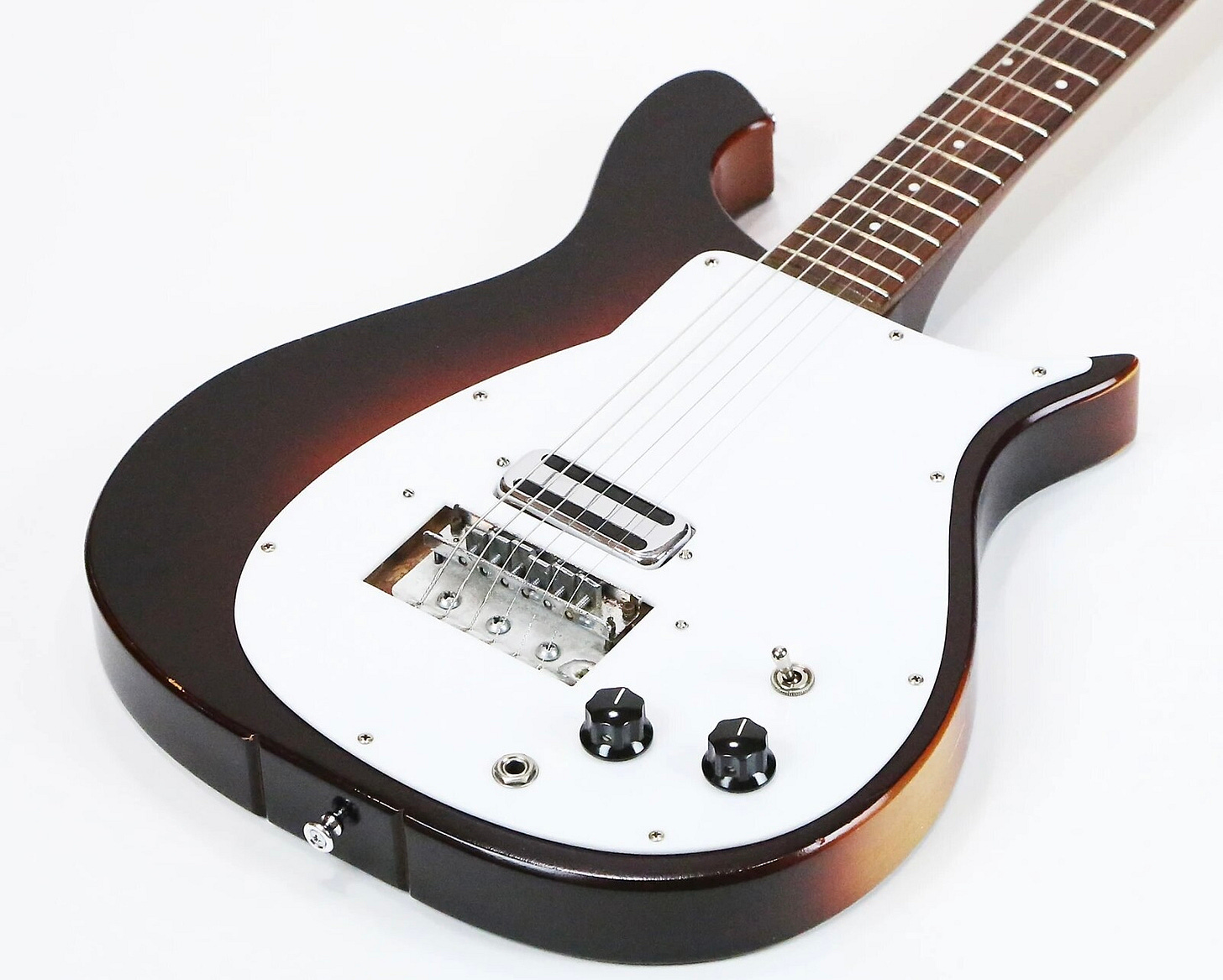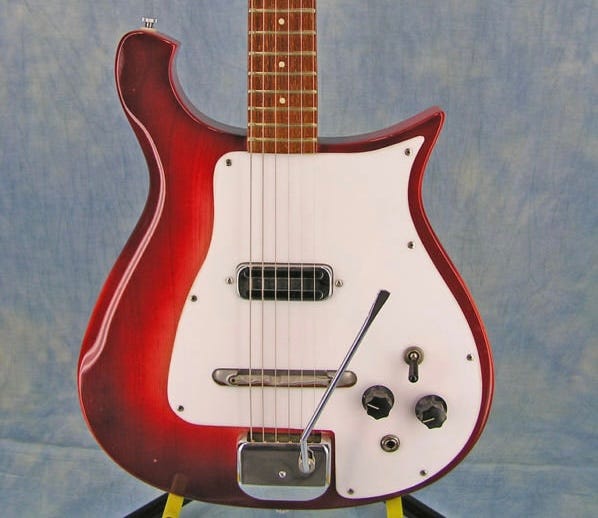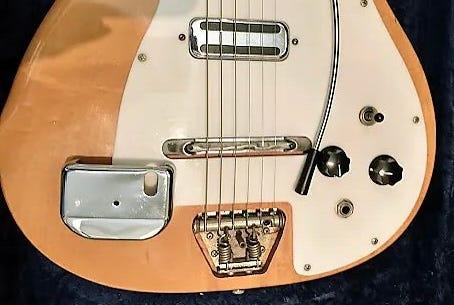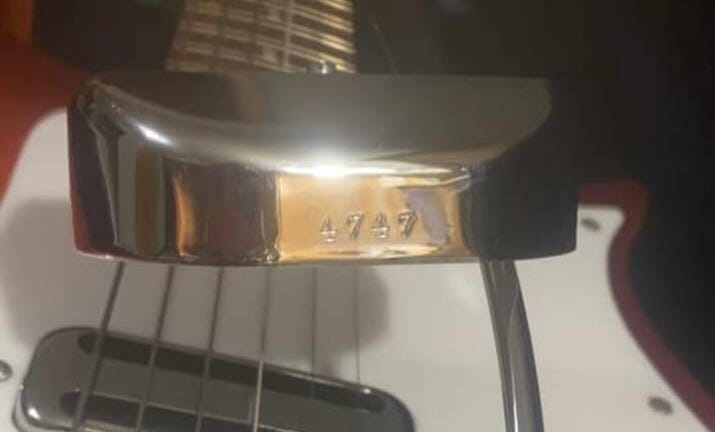Short Takes: Vibrato Equipped 425 Serial Numbers
While Rickenbacker has had a fairly logical serial numbering methodology since 1961, there have been a handful of exceptions to the rule. We’ve already discussed the headstock stickers used in 1965, and here’s another one!
In “Rickenbacker-speak”, a model number that ends in -5 is usually equipped with a vibrato. That was NOT true of the single pickup 425, launched in 1958.

Why? Who knows. But from its launch until 1965 the 425 conspicuously did not come equipped with a vibrato, model number be damned. But in 1965 that would change when the 425 would be “split” into two models: the non vibrato equipped 420 (identical to the “former” 425), and the newly vibrato-equipped 425.

Commonly misidentified as a “Boyd” vibrato, it was a simple Japan-sourced roller bar/spring unit very similar to vibratos found on period Teiscos and the like.

You’ll note, however, that the bridge assembly was modified to include only the floating compensated bridge unit—the bridgeplate was unnecessary here. No big issue except…that’s where the serial number was stamped on all models without a side output jack. So where to put the serial number?

On the base of the vibrato cover, of course! Although it looks a little different than the standard Rickenbacker “year/month/ production number” scheme. Does it mean anything? Yes, but it takes a little detective work to figure it out. Let me explain.
So it IS a production number. And for guitars made AFTER 1965, it falls right in line with all other production numbers for guitars made that year—it just lacks the Year/Month code. So first you need to look at the pot codes to see what year it was made. Once you have that, you can find what month that production code falls into by looking at the register for guitars with “close” production numbers and boom, you have a date!
1965 is a little more difficult. Again, start with the pot codes to get your year. The reason 1965 is more difficult is that year every time they got to production number 999 they started over again at 1–making it difficult to find the “right” closest numbers in the register. Plus which, the vibrato unit often has a four digit serial…does the first digit signify which “group of 999” guitars that guitar belongs to? It may. We don’t have enough data to say for sure. But using the pot codes and the register you should be able to narrow it down close enough.
The 425 would remain on the price list through 1971, although it appears production ended in 1967. Why this model got this serial number format we do not know. What it means, however, we DO know. In the end, what is important to know is that it exists, and now YOU know all there is to know about it!


re: "There is no sense to it. You have to use pot codes to narrow down the date ranges on these guitars."
These SN's - they're the same sequence as the other guitars of the year w/out the prefix; you can date them from the SN.
re: " No, it does not follow the Rickenbacker serial number scheme. No, it has no numerical relationship to other instruments made in the same time period. "
Lots of work to trace the sequences but these SN's aren't random, it's the same system.